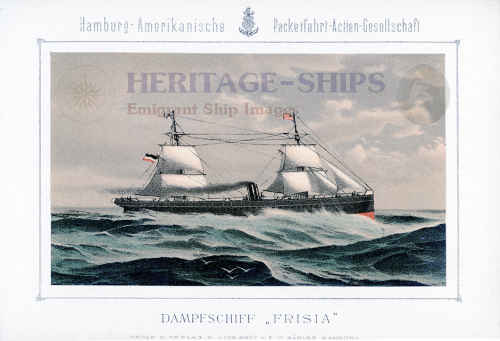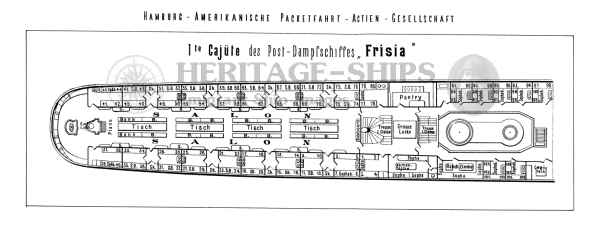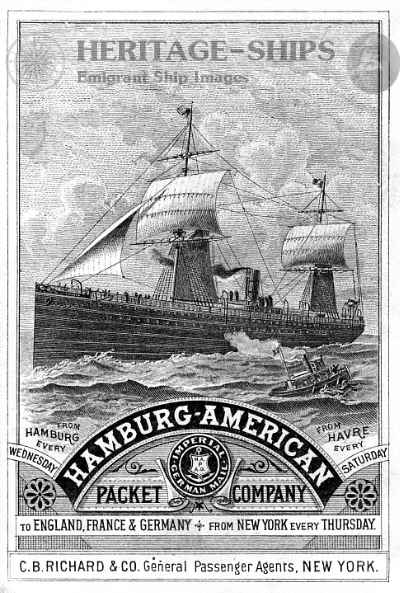
Hamburg America Line steamship Frisia
Support Norway Heritage: Purchase a copy 
Hamburg America Line steamship Frisia - Plan of the First-Class Accommodation
Support Norway Heritage: Purchase a copy 
Frisia,Hamburg America Line steamship
Support Norway Heritage: Purchase a copy
When launched the Frisia was rated by the Hamburg America Line as the "best and fastest" of the fleet. She was about 3,500 tons burden; with a length of 364 feet, and 43 feet breadth of beam (also given as 350ft x 40ft in some sources). She was a four-decked ship, with hull and three lower decks of iron and the upper deck laid in teak. Her
engines were 750 horse-power and had 106-inch cylinders with 6½ feet stroke. She was considered to be very strongly built, and had seven water-tight compartments, with all of which the pumps were connected. As a precaution against accident or damage by fire, all the apartments of the ship were traversed by steam-pipes, from any of which a strong head of steam could be obtained. She also had 10 large metallic life-boats ready for use in case of a disaster.
The original accommodations for passengers were as follows: First-class, 102; second-class, 126; steerage, 620. The
steerage, winch was seven feet in height, had all the recognized improvements, including, in common with the other passenger decks, ventilating fans, propelled by a separate engine, by which a continuous current of pure air was insured from the lowest to the uppermost deck. The state-rooms were 8 by 10 feet in floor space, and were well furnished and neatly and durably ornamented. The cabins, saloons, conversation-rooms and smoking-rooms were of mahogany, with bird's-eye maple panels, the other ornamentation was gilded figure-work, and, in all convenient and desirable positions. The sitting-room on the upper deck, was designed for ladies' use in unpleasant weather was deemed a most desirable addition to the ship's conveniences. The stairways connecting the several decks had two upper openings, one on either side or the mast, thereby preventing unpleasant meetings of the upward and downward bound.
Her first passage from Hamburg to New York was made in eleven days, though the weather was almost continuously rough. Her officers and Crew on the maiden voyage consisted of Capt. E. Meier, an experienced seaman, four additional officers, four engineers and 126 men as a Crew.